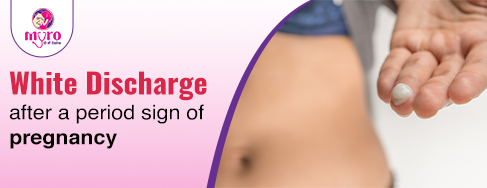
Understanding White Discharge After Period: Types, Causes, and Pregnancy
White discharge after a period is normal for women and can have different causes and meanings. In this blog post, we will explore the different types of vaginal discharge, their potential causes, and whether white discharge after a period can be a sign of early pregnancy. It’s important to know about vaginal health to notice any unusual changes and get the right medical help if necessary.
White Discharge After Period
White vaginal discharge, medically labeled leukorrhea, is a usual symptom among women after their menstruation that turns into a milky or yellowish color. During the cycle of menstruation, this discharge occurs mainly due to hormone alterations (including estrogen and progesterone levels). Following the menstruation, the estrogen levels are going to rise, the glands at the cervix and vagina are to produce more vaginal fluids that will result in the white discharge.
Normal Post-Period Discharge
After a period, it’s common to see some brown discharge, which is old blood being released from the uterus lining. This discharge happens a few days after your period ends and is usually light, not needing tampons or pads.
Abnormal Discharge
White discharge after a period is generally considered normal, but it can indicate an issue in some cases. Yellow or green discharge may indicate STIs such as chlamydia, trichomoniasis, or gonorrhea. These infections may also cause an unpleasant genital odour.
White Discharge During Pregnancy
Pregnant women commonly experience white discharge, which is generally considered safe. This discharge is typically thin, transparent, milky white, and odourless. It serves as a protective mechanism to flush away bacteria and prevent uterine and vaginal infections during pregnancy. The volume of discharge may increase as pregnancy progresses.
Different Types of Vaginal Discharge after a period or Before
1. White Discharge: Thick, It is common during the early and late stages of the menstrual cycle. It typically does not cause itching, unlike yeast infections, which have itching and a thick, white discharge.
2. Clear and Watery: This discharge can happen at different times during the menstrual cycle and may be more noticeable after exercise.
3. Spotting Blood: Some women might see light bleeding or brown discharge during ovulation or early pregnancy instead of their usual period.
4. Clear and Stretchy: Clear and stretchy mucus is a sign of fertility and typically occurs during ovulation.
5. Yellow or Green: Yellow or green discharge with a cottage cheese-like texture and bad smell could mean there is an infection.
When to Consult a Doctor or Gynaecologist
If you notice any unusual changes in your vaginal discharge or experience pain, itching, or persistent brown spots following your period, it’s advisable to schedule an appointment with your healthcare provider. Changes in menstrual cycle may signal medical problems like infections or cancer, needing quick medical attention.
If you live in Jaipur and need a good gynaecologist, go to Myro Clinic with Dr. Satyamvada Pandey for quality care. She is the best Gynaecologist in Jaipur having 15+ Years of Experience. She is renowned for her compassionate care and patient-centred approach to gynecological issues. She offers services like treating vaginal discharge, high-risk pregnancies, childbirth care, endoscopic surgery, gynecology consultations, and more.
Conclusion
White discharge after a period is normal for women and usually means their reproductive system is healthy. However, it’s essential to be aware of the different types of discharge and their potential causes. If you see any strange changes in your vaginal health, see a doctor to make sure you are okay.